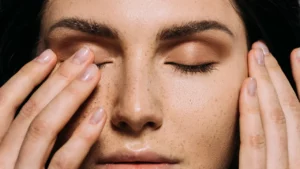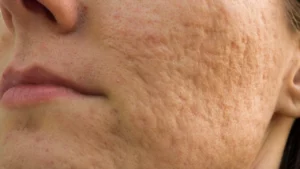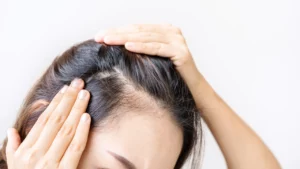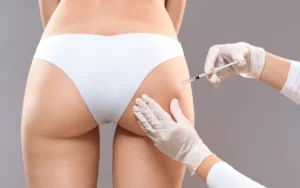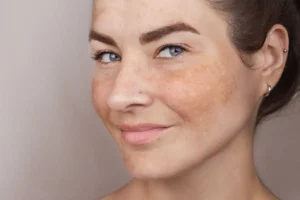Sensitive skin and rosacea are two common dermatological conditions that can significantly impact a person’s quality of life. Whether you’re dealing with occasional skin sensitivity or a chronic rosacea flare-up, it’s essential to understand the causes, symptoms, and available treatment options to effectively manage these conditions.
This blog will delve into sensitive skin and rosacea, highlighting their distinct characteristics and potential overlapping symptoms. By gaining a deeper understanding of these conditions, you’ll be better equipped to identify and differentiate their symptoms, leading to more targeted and effective treatments.
Understanding Sensitive Skin and Rosacea
Sensitive skin is easily aggravated and inclined to reactions from various factors such as environmental triggers, skincare products, and specific ingredients. People with sensitive skin often experience symptoms like redness, itching, stinging, or tightness. Their skin may react more to temperature changes, sun exposure, and harsh chemicals.
On the other hand, rosacea is a chronic inflammatory skin condition that primarily affects the face. It is characterized by persistent facial redness and visible blood vessels (telangiectasia) and often includes symptoms like flushing, acne-like bumps, and a sensation of burning or stinging. Rosacea can vary in severity, with some individuals experiencing occasional flare-ups while others have more persistent symptoms.
Common Triggers and Factors that Worsen Sensitive Skin and Rosacea
Both sensitive skin and rosacea can be triggered by similar factors, including:
- Extreme temperatures (hot or cold)
- Sun exposure and ultraviolet (UV) radiation
- Harsh skincare products containing fragrances, alcohol, or certain chemicals
- Stress and emotional factors
- Certain foods and beverages, such as spicy foods, alcohol, and hot drinks
- Physical exertion and strenuous exercise
Differences and Similarities between Sensitive Skin and Rosacea
While sensitive skin and rosacea share some similarities, they have distinct characteristics that set them apart:
- Sensitive skin is primarily characterized by heightened reactivity and susceptibility to irritation, whereas rosacea involves persistent facial redness and other specific symptoms.
- Sensitive skin can occur in individuals without rosacea, but many have sensitive skin.
- Rosacea is a chronic condition with various subtypes, while sensitive skin can be temporary or long-term.
- Both conditions can benefit from similar skincare practices, such as using gentle products and avoiding triggers, but rosacea often requires specific medical treatments to manage its symptoms effectively.
Understanding the differences and similarities between sensitive skin and rosacea is crucial for accurate diagnosis and personalized treatment plans.
Recognizing Symptoms of Sensitive Skin and Rosacea
Recognizing the symptoms of sensitive skin and rosacea is crucial for accurate diagnosis and appropriate treatment. Although both conditions can present with similar symptoms, understanding the distinguishing features can help individuals seek the necessary care and make informed decisions about their skincare routine.
Common Symptoms of Sensitive Skin:
- Redness: Sensitive skin often appears flushed or reddened, especially after exposure to triggers.
- Irritation and Itching: Individuals with sensitive skin may experience persistent itching, stinging, or a sensation of tightness.
- Dryness and Flakiness: Sensitive skin tends to be prone to dryness, leading to flaky or rough patches.
- Sensitivity to Products: Certain skincare products, such as harsh cleansers or fragrances, can cause immediate reactions like redness or burning sensations.
- Reactions to Environmental Factors: Sensitive skin may react to temperature extremes, wind, sun exposure, or pollutants, resulting in discomfort or visible redness.
Common Symptoms of Rosacea:
- Facial Redness: Persistent redness on the central face, including the cheeks, nose, forehead, and chin, is a hallmark of rosacea.
- Flushing and Blushing: Rosacea flare-ups often lead to sudden and intense facial flushing or blushing triggered by factors like heat, stress, or certain foods.
- Visible Blood Vessels: Small, visible blood vessels (telangiectasia) may appear on the face, particularly on the cheeks and nose.
- Papules and Pustules: Some individuals with rosacea experience acne-like bumps, which may be red and inflamed.
- Burning or Stinging Sensation: Rosacea can cause discomfort, including a sensation of burning, stinging, or tightness on the face.
Differentiating between Sensitive Skin and Rosacea Symptoms
While there can be overlapping symptoms between sensitive skin and rosacea, certain features can help differentiate the two:
- Rosacea typically presents with persistent facial redness and visible blood vessels, not commonly associated with sensitive skin alone.
- Sensitive skin may react quickly to specific triggers or products, whereas rosacea symptoms may persist longer, even without triggers.
- The presence of acne-like bumps and the sensation of burning or stinging are more indicative of rosacea.
If you suspect you have sensitive skin or rosacea, it is advisable to consult with a dermatologist or skincare professional for an accurate diagnosis. They can evaluate your symptoms, medical history and perform any necessary tests to provide an appropriate treatment plan tailored to your condition. Early recognition and management of symptoms can help minimize discomfort and improve the overall health and appearance of the skin.
Treatment Options for Sensitive Skin and Rosacea
Non-invasive treatment options provide viable alternatives for managing sensitive skin and rosacea without surgery or extensive downtime. These procedures leverage advanced technologies to target specific skin concerns, reduce redness, and improve overall skin health. Let’s explore some commonly used non-invasive treatments for sensitive skin and rosacea:
- Bright Lights:
Bright Lights therapy, also known as light-emitting diode (LED) therapy, utilizes specific wavelengths of light to target blood vessels and reduce redness associated with rosacea. The treatment involves exposing the skin to LED lights of different colors, such as green or yellow, which can help reduce inflammation, promote healing, and improve the skin’s overall appearance. Multiple sessions may be mandated to attain optimal results.
2. Photo Facial HD:
Photo Facial HD, or intense pulsed light (IPL) therapy, is a non-invasive treatment that uses broad-spectrum light to target and constrict blood vessels, reducing redness and improving skin tone. IPL can address other concerns like pigmentation irregularities, sun damage, and fine lines. The procedure involves delivering intense pulses of light to the skin’s surface, selectively targeting blood vessels and stimulating collagen production.
3. Clearlift 4D:
Clearlift 4D, or fractional laser treatment, is a non-ablative laser therapy that improves skin texture, reduces redness, and stimulates collagen production. This treatment involves delivering laser energy controlled to create microscopic channels in the skin. The process enables the body’s natural healing response and collagen production, resulting in improved skin texture, reduced redness, and a more even complexion. Clearlift 4D can be an effective option for individuals with rosacea looking to minimize redness and achieve smoother skin.
4. Gold Plasma:
Gold Plasma treatment is a non-invasive procedure that utilizes plasma energy to target blood vessels and reduce redness associated with rosacea. The device emits controlled plasma energy, which creates a controlled thermal effect on the skin. This process leads to the constriction of blood vessels and a reduction in redness. Gold Plasma treatment is gentle and can be used on sensitive skin, providing a viable option for individuals with sensitive skin and rosacea.
Takeaway
Ready to take control of your sensitive skin and rosacea? Discover the non-invasive treatment options offered by Isya Aesthetics. Schedule a consultation with our experienced skincare professionals today to discuss how Bright Lights, Photo Facial HD, Clearlift 4D, or Gold Plasma can help improve your skin’s health and reduce redness. Don’t let sensitive skin and rosacea hold you back any longer. Visit Isya Aesthetics and journey towards smoother, more radiant skin. Contact us now to book your appointment and unlock the possibilities for a more confident you.


